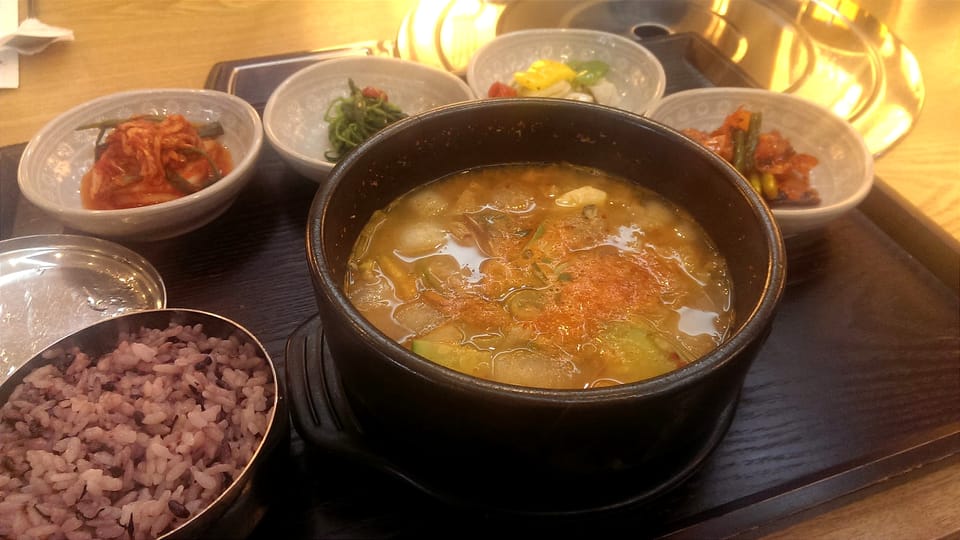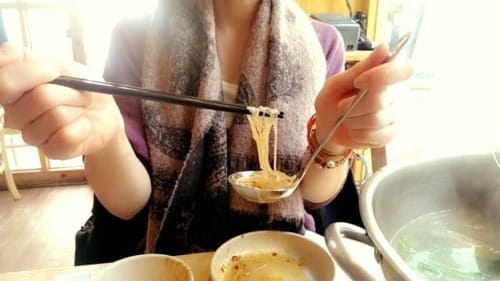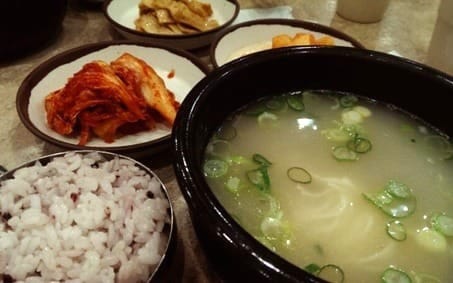Doenjang Jjigae | Korean soybean paste stew

Originally posted on April 25th2014.
Today I am introducing one of the homemade traditional dishes which is Doenjang Jjigae and I am going to explain why it is so healthy.
This is a stew where vegetables (usually potato, garlic, onion, zucchini, green onion), shrimp, dried anchovies, clams and tofu is cooked with doenjang, fermented soy-bean paste. As I learned from my Korean & Japanese food class last semester, doenjang is very healthy.
In soybean the anti-cancer activity and anti-mutation activity is increased after fermentation. Fermentation is the process of breaking organic materials by microorganism into final products. Anti-bacterial materials in fermented soybean paste are pepticides including 4-hydroxy benzoic acid which are produced during fermentation. Also Vitamin B12 is produced which does not exist in raw soybeans. The phytochemicals such as genistin, genisteine and daidzein contain anti-cancer, anti-inflammation and anti-oxidant effects. They prevent cardiovascular diseases. If you are interested you can read more about the health and nutrional effects of korean food in this post:

Usually Koreans eat it at home, traditionally for breakfast. That is why Koreans, especially the younger generation don't eat Doenjang Jjigae outside. But anyways my history and travel documentary loving Korean friend went to this nice Korean restaurant with me. We were actually supposed to meet to talk about our class presentation, but food is always a very nice distraction for studying.^^
So the Doenjang Jjigae came in a stone pot, served with red-bean rice and various Banchans. As this restaurant was a little higher priced they served really good Banchans which is why I want to introduce some of them.




Kimchi of course is always served as a Banchang to every Korean dish. Then there was dried octopus marinated in a chili-paste with green onion and string beans. Also there was young spinach (I am actually not sure) blanched and lightly salty seasoned with sesame seeds. My favorite one that with the oyster mushroom blanched with paprika and seasoned with sesame oil. It's taste came out very subtle by that.
Although Doenjang Jjigae is a little spicy it is one of the must-try-dishes in the Korean cuisine.




